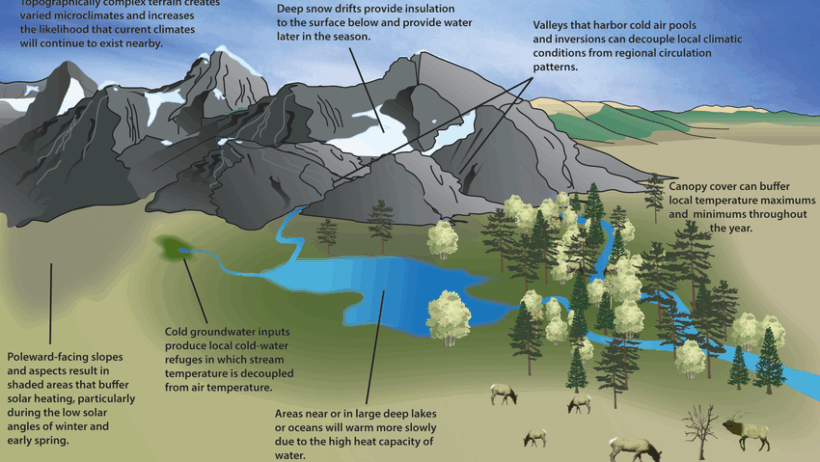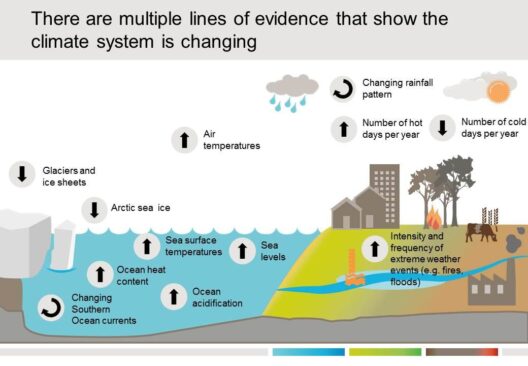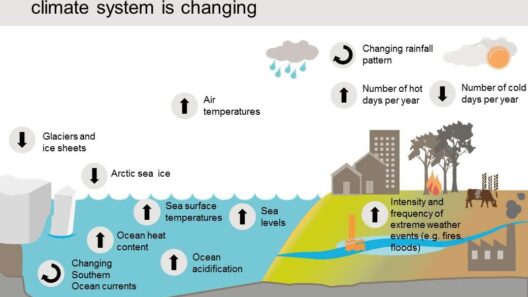The interplay between mountains and microclimates is a compelling subject steeped in meteorological complexity. The vertical differentiation that altitude engenders profoundly influences local weather patterns, creating niches of environmental variability that can differ sharply from lowland regions.
Understanding the relationship between altitude and climate requires a recognition of the diverse mechanisms at play. Mountains act as formidable barriers to airflow, often leading to phenomena known as orographic lift. As moist air ascends the windward side, it cools adiabatically, resulting in the condensation of water vapor and the eventual precipitation that nourishes ecosystems at higher elevations. This process can create lush, temperate microclimates on the windward side, while the leeward side often experiences a starkly different environment.
As the air descends on the leeward slope, it warms, leading to a phenomenon known as the rain shadow effect. This results in arid zones with significantly diminished precipitation, creating contrasting biomes within relatively short distances. Regions such as the Sierra Nevada and the Andes exemplify this dichotomy, where one can traverse from lush forests to stark deserts in just a few kilometers.
The elevation gradient does not only affect precipitation; it fundamentally alters temperature regimes. Generally, as altitude increases, temperature decreases. The lapse rate—the rate at which temperature decreases with an increase in altitude—typically averages about 6.5 degrees Celsius per kilometer. However, this lapse rate can vary significantly based on local climatic conditions, atmospheric pressure, and the time of day. This gradient facilitates a diverse array of habitats within buoyant ecosystems.
Moreover, altitude influences solar radiation exposure. Higher elevations receive increased ultraviolet (UV) radiation, which can impact not just climatic averages but also the physiology of flora and fauna. Many alpine species exhibit specialized adaptations, such as thicker cuticles and reflective leaf surfaces, to mitigate the detrimental effects of heightened solar exposure. Understanding these adaptations allows for insights into how species might cope with shifting climatic conditions due to anthropogenic climate change.
The topographic complexity of mountainous areas introduces additional variables to local climates. Valleys, ridges, and slopes can create unique microclimates. For instance, valleys may be prone to temperature inversions, where warmer air traps cooler air below, leading to localized frost events. Conversely, exposed ridges may experience extreme wind conditions, contributing to desiccation and limiting the type of vegetation that can thrive in such harsh environments. These variations foster biodiversity, as different species adapt to specific climatic niches.
The concept of microclimates extends beyond simple temperature and precipitation disparities. The microhabitats found in mountainous regions can vary widely even within a single elevation band. Factors such as soil type, moisture retention capacity, and aspect (the direction a slope faces) combine to create unique ecological zones. South-facing slopes, for example, typically receive more sunlight than north-facing counterparts, leading to temperature differentials that can influence plant communities and wildlife distribution.
Fluctuations in climatic conditions at different altitudes can have ramifications for agriculture and land use. Farmers operating in foothill regions may find that their crops are subject to less predictable weather patterns compared to their counterparts in lower valleys. For example, certain crops may flourish in warmer microclimates found on sun-exposed slopes, while others may struggle in cooler, shadier areas. As climate trends evolve, the adaptation strategies employed by local farmers must also shift, incorporating techniques that account for increased weather variability.
Urban planning and development can be significantly affected by these microclimatic variations as well. Cities nestled in valleys may experience worse air quality and heat retention due to temperature inversions, necessitating urban designs that promote ventilation and mitigate heat. Meanwhile, mountain towns may need to consider hazard mitigation strategies, such as landslide prevention and snow removal, as their climatic conditions deviate from those encountered in lower, more temperate regions.
The mountain-climate interaction also influences hydrology. Snowmelt dynamics, critical in arid regions, are profoundly affected by elevation. The timing and amount of snow accumulation can dictate water availability for entire communities downstream. As global temperatures rise, the patterns of snow accumulation and subsequent melt are predicted to undergo significant transformations, leading to altered water supplies that can have cascading effects for agricultural practices, ecosystem health, and urban water management. Understanding these dynamics is essential for developing adaptive management strategies that can sustain the integrity of both human and natural systems.
As the inexorable march of climate change continues, the mountains—our planet’s formidable sentinels—will undoubtedly reflect the upheaval in weather patterns. Increased temperatures may lead to the encroachment of species typically found at lower elevations, which could outcompete native mountain flora, significantly altering established ecosystems. Therefore, ongoing research into the nuanced relationships between altitude and climate is essential for conservation efforts aimed at preserving the biodiversity that these microclimates shelter.
In conclusion, the transformation of weather patterns due to altitude creates a myriad of microclimates that contribute to environmental complexity. From the lush, moist regions on windward mountain slopes to the stark aridity in rain shadow areas, the impact of elevation on climate is profound and multifaceted. Recognizing and understanding these dynamic relationships is crucial for informed environmental stewardship, policy-making, and sustainable land use practices in the age of climate change.






